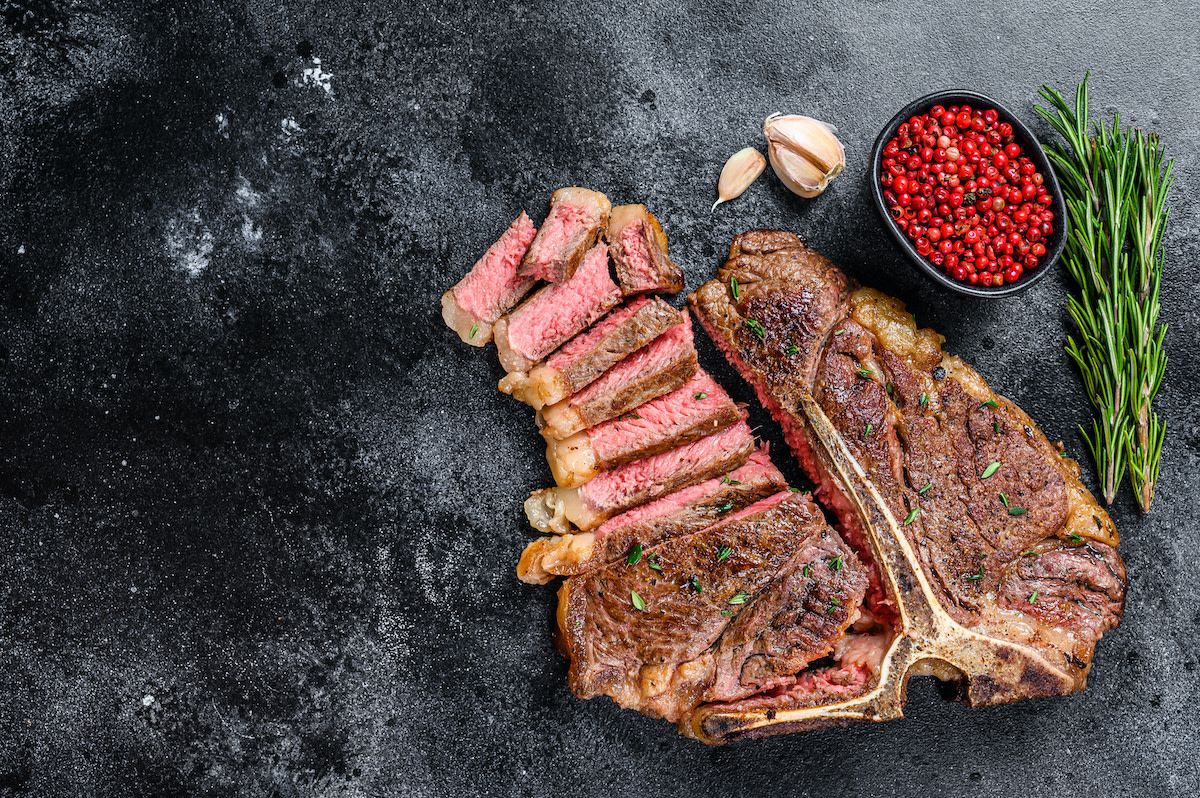Porterhouse vs. Ribeye: 3 Key Differences in the Cuts of Steak
Written by MasterClass
Last updated: Sep 17, 2021 • 2 min read
When choosing the right cut of meat for your steak, the decision can come down to porterhouse and ribeye. Choosing between the different cuts depends on your preferred textures, flavors, and cooking method.
Learn From the Best
What Is a Porterhouse Steak?
A porterhouse steak is a cut of beef from the cow that comes from the rear end of the short loin. The resulting porterhouse cut combines tenderloin steak with New York strip steak (also called a top loin), making it a very large piece of meat. A center bone holds the two pieces of meat together.
Porterhouses are a composite steak, since it is two cuts combined into one. Due to its composition, the porterhouse cut of steak is a tender cut, best when served medium rare, which gives it a buttery flavor.
What Is a Ribeye Steak?
A ribeye steak is a primal cut of the cow that comes from the loin and the shoulder (also called the chuck), right in the rib section. If you have roasted a prime rib (also called a standing rib roast) before, then you’re already familiar with this cut of beef rib. You can get ribeye steaks with or without the bone, which you call bone-in or boneless, respectively.
A boneless ribeye steak tends to be easier to cook, as the cut of meat around the side of the bone on a bone-in ribeye takes longer to reach the same internal temperature than the rest. Ribeyes also feature extensive marbling from their high fat content, which makes the cut more moist and flavorful.
Porterhouse vs. Ribeye: What’s the Difference?
Both porterhouse and ribeye are cuts of steak from a cow, but there are many things that separate the two, from cooking methods to texture.
- Bone content: You can order your ribeye with or without the bone, but porterhouse steaks always come with the bone.
- Cooking methods: You can fire up your barbecue (also called a BBQ) for grilling or prepare your broiler for broiling with a ribeye. To make a porterhouse like a steakhouse prepares one, grill it—just watch out for flare-ups the fat can cause. Otherwise, you can put your porterhouse on a cast-iron skillet and pan-fry it on your kitchen stovetop. No matter what cooking process you choose, use a meat thermometer to determine if the steak is the right level of doneness before you take it off the cooking surface.
- Thickness: Whether you get a bone-in or boneless ribeye at your local grocery store, the thickness depends on the way the butchers make their cuts. The United States Department of Agriculture (USDA) says that porterhouse steaks have to be at least 1.25 inches thick, so this is a good option if you have a hearty appetite.
Want to Learn More About Cooking?
Become a better chef with the MasterClass Annual Membership. Gain access to exclusive video lessons taught by the world’s best, including Aaron Franklin, Yotam Ottolenghi, Gabriela Cámara, Niki Nakayama, Chef Thomas Keller, Dominique Ansel, Gordon Ramsay, Alice Waters, and more.
